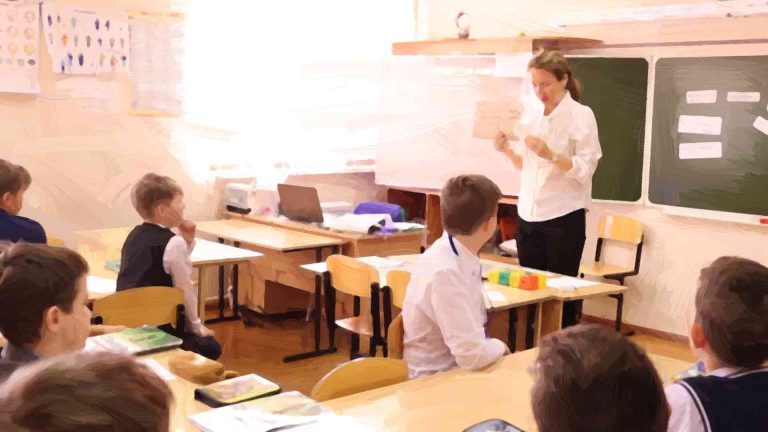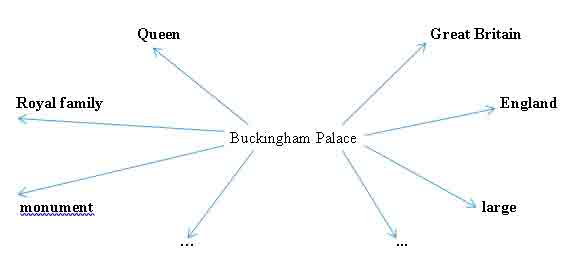Конспект урока по английскому языку в 6 классе на тему: «Sights of London. Buckingham Palace». Урок предназначен для учителей английского языка.

Lesson type: lesson for learning new knowledge.
The purpose of the lesson: the formation of the student’s reading skills.
Lesson objectives:
- Educational: contribute to the passive assimilation of lexical material on the topic «Sights of London».
- Developing: to develop the language and cognitive abilities of students, to develop the readiness for communication on the basis of the proposed written material; to develop visual memory, speech, thinking, perception; to improve the skills of reading and oral monologue.
- Educational program: promote the development of communicative qualities of the individual, the formation of interpersonal communication through the organization of group work in the classroom.
Formed Generated Universal learning activities:
- Personal: the formation of interest (motivation) to learning, the ability to adapt to difficult situations, a value attitude to their health, an adequate understanding of the reasons for success/failure in educational activities, the ability to establish a connection between the goal of the activity and its result.
- Regulatory: the ability to correlate the completed task with the sample proposed by the teacher, to highlight and be aware of what has already been learned and what still needs to be learned.
- Subject skills: the ability to correctly understand the meaning of lexical units on a topic, the ability to use words in a given situation, free orientation and perception of the text, conscious and arbitrary construction of a speech utterance using support.
- Metasubject: ability to self-organize, self-regulate, and reflect.
Age: 6th grade.
Training method: problem-based, collaborative interaction.
Forms of organization of cognitive activity:
frontal, group, individual, independent.
Equipment of the lesson: O. V. Afanasyeva, I. V. Mikheeva Textbook for general education institutions: English. English 6, didactic handout, computer, screen, lesson work cards.
The procedure of the lesson
I. Organizational moment of the lesson
1. Greeting. Pupils stand in a circle, take each other’s hands and say a rhyme:
Good morning, Good morning, Good morning to you!
Good morning, Good morning! I’m glad to see you!
Учитель: Now turn to each other and wish each other good luck (учащиеся выполняют это действие).
2. The sounds of Big Ben sound, and at the same time slides with views of London appear on the screen.
Teacher: What wonderful sounds they were! But I didn’t understand whether there were sounds of a clock or ones of a bell (problem statement).
Students make suggestions.
2. Setting the topic of the lesson.
There are also some pictures on the screen. What will we talk today about?
Pupils suggest that today they will talk about Buckingham Palace.
The teacher writes down the topic of the lesson on the blackboard: “Sights of London. Buckingham Palace”. What should we today do to know much more about sights of London and Buckingham Palace?
3. Setting the goals of the lesson.
On the magnetic board there are hints for setting the goals of the lesson: communicate with each other, read the text, translate the text, play games, as well as false alternatives: visit our friends, eat sweets, run.
Pupils: I think we will read the text.
I’d like to translate the text etc.
II. Updating knowledge
1. Phonetic charging.
What sights of Great Britain do you know?
Pupils name the sights they know. The realities are worked out phonetically.
The Tower of London
The Houses of Parliament etc.
2. Let’s play the game «Jockeys and Horses»!
_____, you are the leader of your group. _____, choose the members of your team. Members of the first group have short texts about different sights. Members of the second group – titles for these texts. Jockeys, catch your Horses!
3. «Brainstorming».
Teacher: What are your associations with the name ‘Buckingham Palace’?

We will add some more associations during our lesson. (The association diagram remains on the board and is updated during the lesson).
4. Setting different types of questions.
Ask each other different questions using these key words.
- Is Buckingham Palace in England or in Wales?
- Is Buckingham Palace in London?
- Who lives in the palace? etc.
5. Primary assimilation of new knowledge.
Reading the text «Buckingham Palace»
Read these sentences to know much more about Buckingham Palace. Fill in the table. Insert (individual cards).
«!» – It’s interesting.
«–» – I think otherwise.
«V» – I know it.
«+» – New information.
«?» – Don’t understand.
| Buckingham Palace | Insert !, V, +, -, ? |
| Queen Elizabeth II spends a lot of time at Windsor Castle and three other palaces. | |
| There are 600 rooms, 78 bathrooms, a cinema, a swimming pool and even a post office at the Palace. | |
| About 450 people work at the Palace. | |
| You can’t sit on the Queen’s and Prince Philip’s chairs! | |
| When the Queen is on holiday in the summer, the palace opens to the public. | |
| The Queen’s initials are ER (Elizabeth Regina) |
Teacher: What information was new for you? What information was interesting for you?
III. The primary test of understanding new knowledge
Retell the story about Buckingham Palace to each other using the key words from the table (Mutual control)

IV. Control of the assimilation of new knowledge (self-control)
Pupils are asked to complete a test based on the text they read.
Teacher: Look at the screen. This is the key to this test (a table with the correct answers appears on the screen).
Give 1 point to each correct answer and count your results. Now give a mark.
- “5” – 5 points; “3” – 3 points;
- “4” – 4 points; “2” – 1-2 points.
V. Dynamic pause
Imagine you have a chance to visit London and meet the Queen! Let’s make a present for Her Majesty – our dancing. :) Are you ready to dance? So, with love from Russia!
VI. Generalization and systematization of new knowledge
Teacher: I would like to see Buckingham Palace because I like historical buildings very much. Would you like to visit Buckingham Palace and why? Look at the blackboard. Use these phrases to complete the sentences. (Pupils verbally make suggestions according to the scheme on the blackboard).
- I would like to visit… because
- It is a pleasure to see…
- I want to go to…
1. CINQUAIN
You should work in small groups. Please use your learning to express your own feelings, emotions and attitude. Use the dictionary.
In the work cards of students, the scheme-memo on the compilation of cinquain:
- 1 noun;
- 2 adjectives;
- 3 verbs;
- 4 words that express their own attitude to the topic;
- 1 word associated with the word №1.
VII. Information about homework, instructions on how to do it
Continue filling out the smart card on the topic of today’s lesson.
VIII. Reflection
1. Activity reflection.
So, we have we done a lot today at our lesson? What can you do now?
- As for me, I know much more about Buckingham Palace now.
- We can read and understand texts about Buckingham Palace.
- I can make a cinquain.
- We can play the game.
2. Emotional reflection.
The floral symbol of England where Buckingham Palace is situated is the red rose. You can see the whole glade of them. Each rose symbolizes the certain point of our lesson. Fix your butterfly on the rose you like all the best.
Teacher: My dear pupils, our lesson is over. I want you to be happy.
Автор: Силютина Кристина Игоревна
Конспект урока по английскому языку в 6 классе «Sights of London. Buckingham Palace»
учитель английского языка первой квалификационной категории
МБОУ «Гимназия №1 им. Н.М. Пржевальского»
город Смоленск, Смоленская область
Дата изменения: 09.05.2021
Дата публикации: 09.05.2021